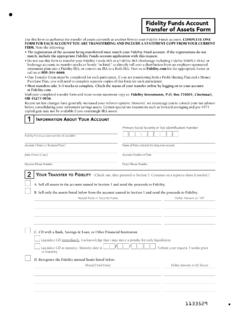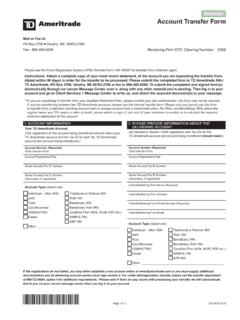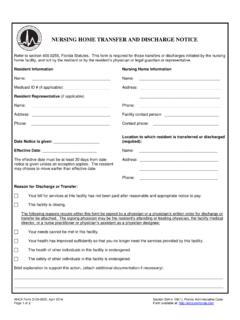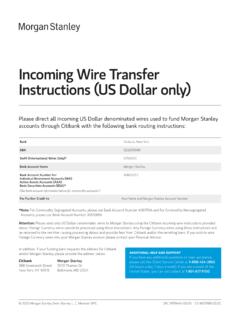Transcription of Configuring Call Transfer and Forwarding - Cisco
1 755 Cisco Unified Communications Manager Express System Administrator GuideOL-10663-03 Configuring call Transfer and ForwardingLast Updated: March 15, 2013 This chapter describes call Transfer and Forwarding features in Cisco Unified Communications Manager Express ( Cisco Unified CME) to enable interworking with various network requirements. Finding Feature Information in This ModuleYour Cisco Unified CME version may not support all of the features documented in this module. For a list of the versions in which each feature is supported, see the Feature Information for call Transfer and Forwarding section on page Information About call Transfer and Forwarding , page 755 How to Configure call Transfer and Forwarding , page 778 Configuration Examples for call Transfer and Forwarding , page 822 Where to Go Next, page 832 Additional References, page 832 Feature Information for call Transfer and Forwarding , page 834 Information About call Transfer and ForwardingTo configure Transfer and Forwarding features.
2 You should understand the following concepts: call Forwarding , page 756 call Forward Unregistered, page 757 B2 BUA call Forwarding for SIP Devices, page 758 call Forward All Synchronization for SIP Phones, page 758 call Transfer , page 759 Trunk-to-Trunk Transfer Blocking for Toll Fraud Prevention on Cisco Unified SIP IP Phones, page 760 and Support, page 764 Configuring call Transfer and Forwarding Information About call Transfer and Forwarding756 Cisco Unified Communications Manager Express System Administrator GuideOL-10663-03 Transfer Method Recommendations by Cisco Unified CME Version, page 767 Support, page 768 Hairpin call Routing, page 768 Tandem Gateways, page 771 Dial Peers, page 773 QSIG Supplementary Services, page 773 Disabling SIP Supplementary Services for call Forward and call Transfer , page 774 Typical Network Scenarios for call Transfer and call Forwarding .
3 Page 775 call ForwardingCall Forwarding diverts calls to a specified number under one or more of the following conditions: All calls When all- call call Forwarding is activated by a phone user, all incoming calls are diverted. The target destination for diverted calls can be specified in the router configuration or by the phone user with a soft key or feature access code. The most recently entered destination is recognized by Cisco Unified CME, regardless of how it was entered. No answer Incoming calls are diverted when the extension does not answer before the timeout expires.
4 The target destination for diverted calls is specified in the router configuration. Busy Incoming calls are diverted when the extension is busy and call waiting is not active. The target destination for diverted calls is specified in the router configuration. Night service All incoming calls are automatically diverted during night-service hours. The target destination for diverted calls is specified in the router directory number can have all four types of call Forwarding defined at the same time with a different Forwarding destination defined for each type of call Forwarding .
5 If more than one type of call Forwarding is active at one time, the order for evaluating the different types is as forward forward forward busy and call forward capabilities are enabled globally on the router by default, and can be disabled either globally or for individual dial peers. You can configure incoming patterns for using the standard. Calling-party numbers that do not match the patterns defined with this command are forwarded using Cisco -proprietary call Forwarding for backward compatibility. For information about Configuring on a Cisco Unified CME system, see the SCCP: Enabling call Forwarding for a Directory Number section on page call ForwardingYou can apply call Forwarding to a busy or no-answer directory number based on the number that is dialed to reach the directory number: the primary number, the secondary number, or either of those numbers expanded by a dial-plan pattern.
6 Cisco Unified CME automatically creates one POTS dial peer for each ephone-dn when it is assigned a primary number. If the ephone-dn is assigned a secondary number, it creates a second POTS dial peer. If the dialplan-pattern command is used to expand the primary and secondary numbers for ephone-dns, it creates two more dial peers, resulting in the creation of the following four dial peers for the ephone-dn: Configuring call Transfer and Forwarding Information About call Transfer and Forwarding757 Cisco Unified Communications Manager Express System Administrator GuideOL-10663-03 A POTS dial peer for the primary number A POTS dial peer for the secondary number A POTS dial peer for the primary number as expanded by the dialplan-pattern command A POTS dial peer for the secondary number as expanded by the dialplan-pattern commandCall Forwarding is normally applied to all dial peers created for an ephone-dn.
7 Selective call Forwarding allows you to apply call Forwarding for busy or no-answer calls only for the dial peers you have specified, based on the called number that was used to route the call to the example, the following commands set up a single ephone-dn (ephone-dn 5) with four dial peers:telephony-servicedialplan-pattern 1 extension-length 4 extension-pattern 5number 5066 secondary 5067In this example, selective call Forwarding can be applied so that calls are forwarded when: callers dial the primary number 5066. when callers dial the secondary number 5067.
8 When callers dial the expanded numbers 4085550166 or configuration information, see the SCCP: Enabling call Forwarding for a Directory Number section on page Forward Unregistered The call Forward Unregistered (CFU) feature allows you to forward a call to a different number if the directory number (DN) is not associated with a phone or if the associated phone is not registered to Cisco Unified CME. The CFU feature is very useful for wireless phone users when the wireless phone is out of the access point or phone shuts down automatically because of an automatic shutdown feature.
9 The service is not available and the call can be forwarded to the CFU destination. Any unregistered or floating DN can be forwarded using the CFU unregistered DN indicates that none of its associated phones are registered to the Cisco Unified CME. A registered phone will become unregistered when the Cisco Unified CME sends an unregistration request or responses to a phone's unregistration request. Cisco Unified CME sends an unregistration request under the following circumstances: When the keepalive timer expires. When a user issues a reset or restart command on the phone.
10 When an extension mobility (EM) user logs into the phone. (All DNs configured under the logout-profile are unregistered except for the shared ones that are associated with other registered phones.) When an EM user logs out of the phone. (All DNs configured under the user-profile are unregistered except for the shared ones that are associated with other registered phones.)There is always a gap between the time the phone loses its connection with Cisco Unified CME and the time when Cisco Unified CME claims the phone is unregistered. The length of the gap depends on the keepalive timer.

















